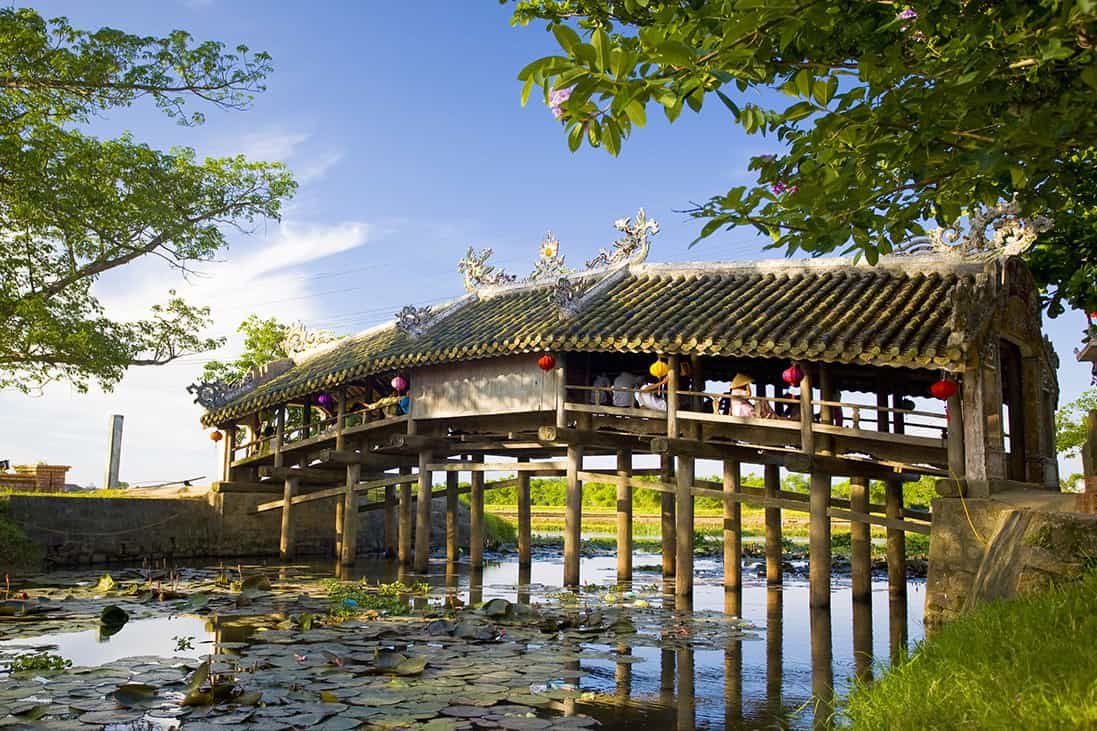
Welcome to Thanh Toan Bridge, a charming and historically significant landmark in the ancient town of Hoi An, Vietnam. Known for its architectural beauty and cultural significance, Thanh Toan Bridge has stood the test of time, serving as a vital link between Hoi An’s past and present. Join us on a travel guide-style exploration of Thanh Toan Bridge, as we uncover its fascinating history, architectural features, and the vibrant atmosphere that surrounds it.
Thanh Toan Bridge, also known as the Japanese Covered Bridge, holds a special place in Hoi An’s history. Built in the 16th century by the Japanese community residing in the town, the bridge served as a symbol of unity between the Japanese and Vietnamese communities during a time of cultural exchange and trade. It has since become an enduring symbol of Hoi An.
Step onto Thanh Toan Bridge and be captivated by its architectural elegance. The bridge combines both Japanese and Vietnamese design elements, reflecting the fusion of cultures that shaped Hoi An. Admire the graceful curves, delicate carvings, and the iconic roof that shelters the walkway. The bridge’s unique architectural style and craftsmanship make it a must-see attraction for visitors.
One of the most distinctive features of Thanh Toan Bridge is the pair of dog and monkey statues placed at either end. These statues are considered sacred and are believed to bring good luck and chase away evil spirits. Take a moment to appreciate the intricate details of the statues and the cultural significance they hold for the local community.
As you walk across Thanh Toan Bridge, imagine the bustling trade activities that once took place beneath its roof. In the past, the bridge connected the Japanese and Chinese quarters of Hoi An, facilitating trade between merchants from different regions. Today, it stands as a symbol of Hoi An’s rich trading history and serves as a reminder of the town’s multicultural heritage.
Thanh Toan Bridge is located within Hoi An Ancient Town, a UNESCO World Heritage site. Take the opportunity to explore the narrow streets and well-preserved buildings that showcase the architectural styles of various cultures, including Chinese, Japanese, and European influences. Immerse yourself in the vibrant atmosphere, browse through local shops, and sample delicious street food as you wander through this enchanting town.
Visit Thanh Toan Bridge during one of Hoi An’s annual festivals to witness the bridge come alive with vibrant colors and festivities. During the Mid-Autumn Festival, the bridge is beautifully decorated with lanterns, creating a magical atmosphere. The Lunar New Year celebration, known as Tet, is also a great time to experience the bridge adorned with traditional decorations and witness cultural performances.
Thanh Toan Bridge stands as a testament to the cultural exchange and historical significance of Hoi An. As you cross this architectural gem, you’ll be transported to a bygone era where trade flourished, and different cultures converged. Immerse yourself in the rich history, admire the architectural beauty, and embrace the vibrant atmosphere of Hoi An’s Thanh Toan Bridge. It’s a place where the past meets the present, inviting you to connect with Hoi An’s fascinating heritage and create lasting memories.
Subscribe to see secret deals prices drop the moment you sign up!
